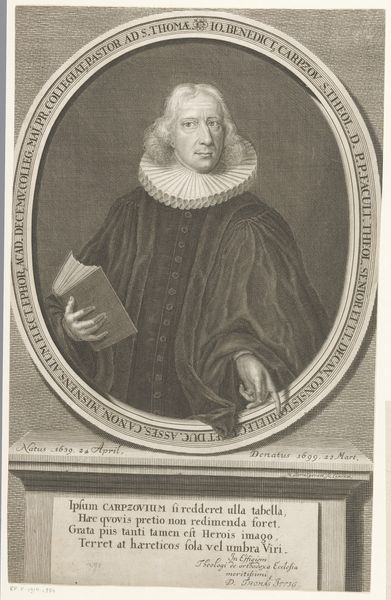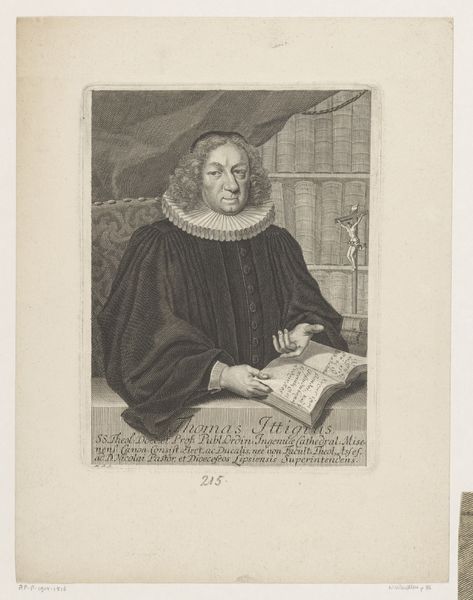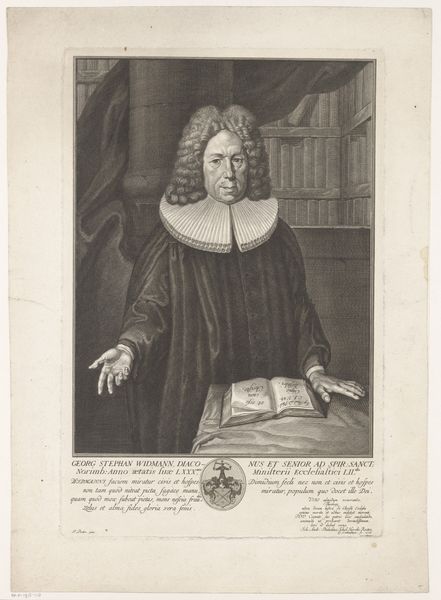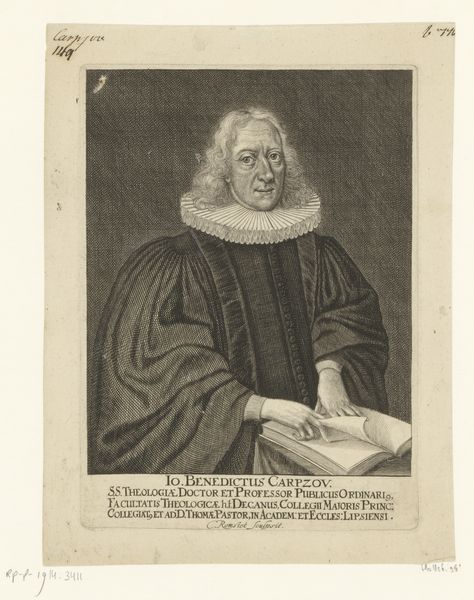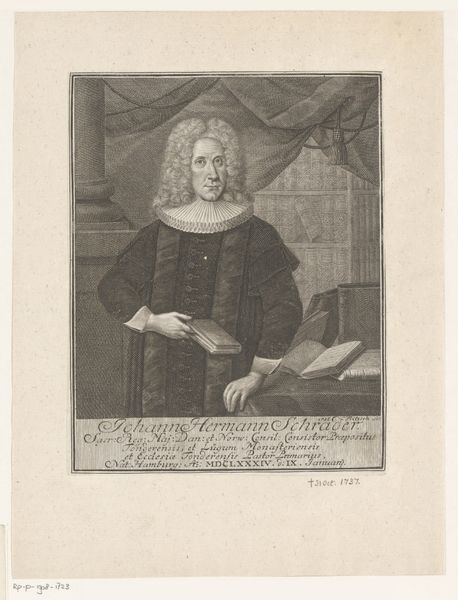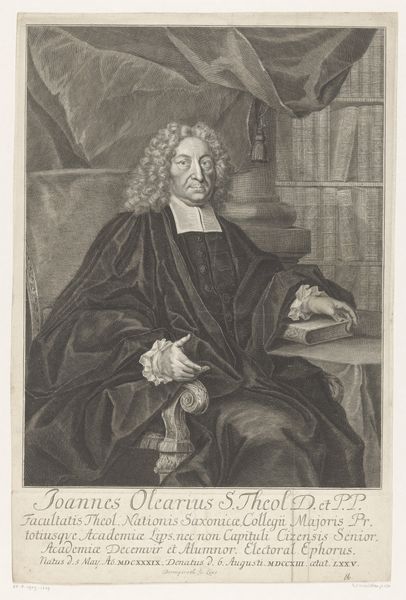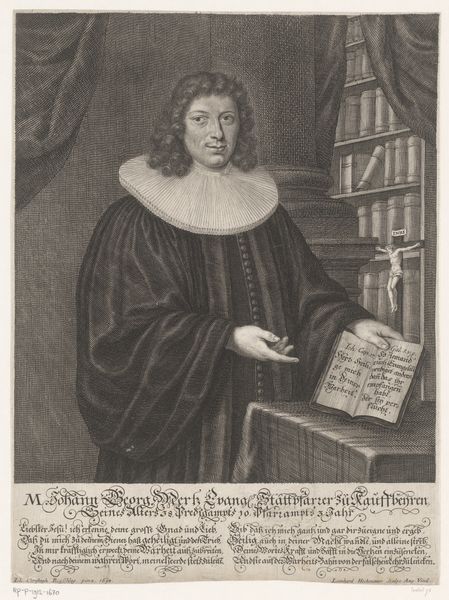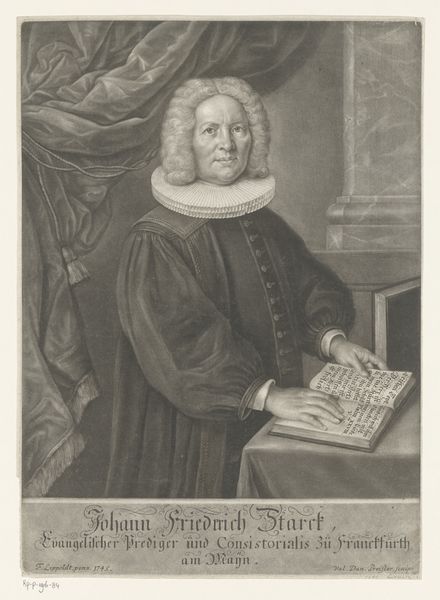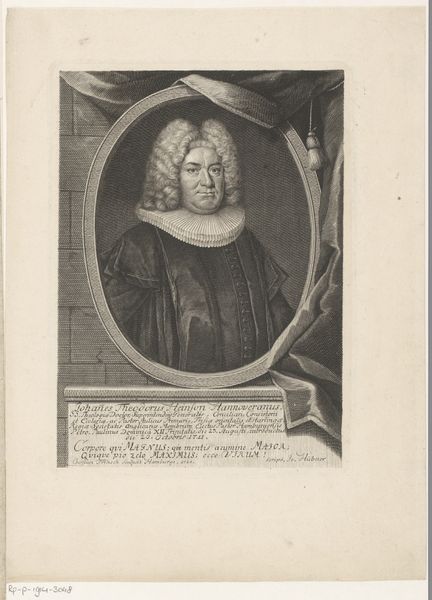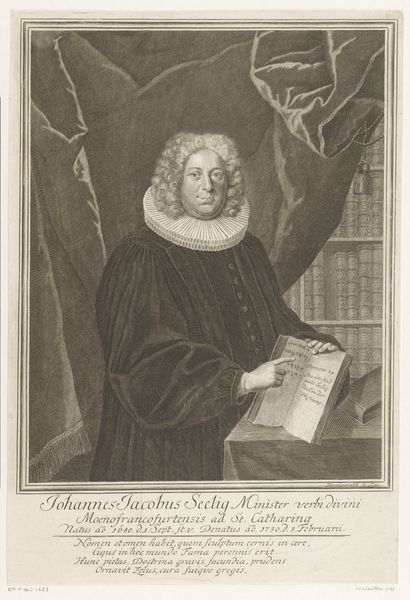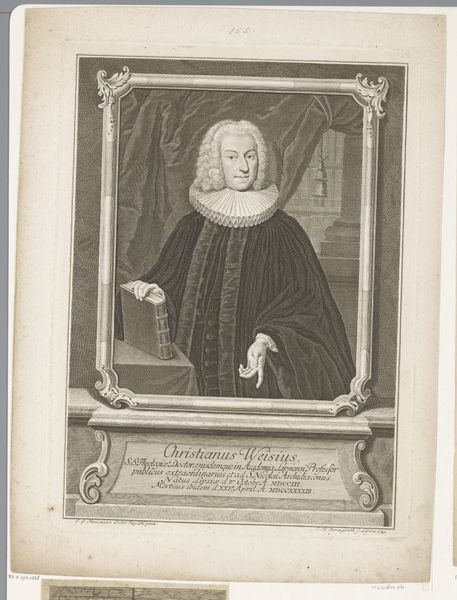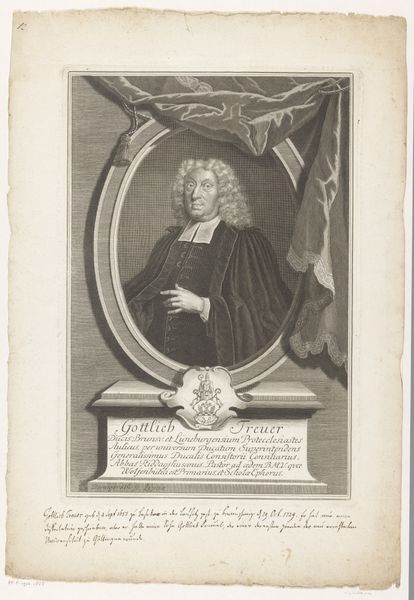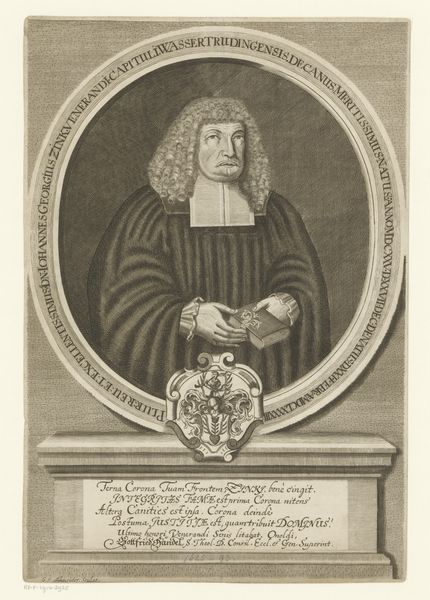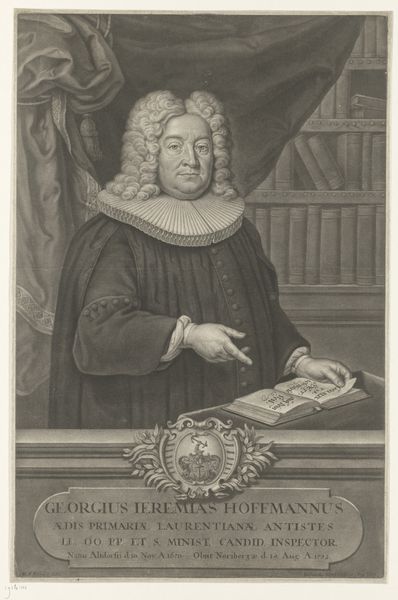
engraving
#
portrait
#
baroque
#
old engraving style
#
history-painting
#
engraving
Dimensions: height 380 mm, width 257 mm
Copyright: Rijks Museum: Open Domain
Curator: Here we have "Portret van Johann Günther," an engraving dating from 1708 to 1733. Editor: It has a solemn feeling, almost severe. I'm immediately drawn to the texture; it feels incredibly tactile, particularly in the rendering of his garments and that elaborate ruff. What kind of labor went into crafting that illusion with engraving? Curator: An enormous amount! We see Bernigeroth working within the Baroque tradition here, and these prints circulated widely. Consider how they propagated certain ideals of power and piety. The institution of portraiture served specific purposes. Editor: Exactly, it speaks to the material means of reinforcing hierarchies. Engraving allowed for multiples, democratizing access somewhat, yet the subject, invariably someone of note, maintains a level of exclusivity. The paper itself, the ink, its distribution all indicate networks of power. Curator: Günther was, according to the inscription, a Doctor of Holy Scripture and Archdeacon at St. Thomas in Leipzig. The location of the church is not simply background: The architecture of St. Thomas, the home of Bach’s famous tenure as the music director, represents established religion as part of city power structure. Editor: It's intriguing to consider how these images, in their mass production, helped shape collective memory and reinforced certain narratives about historical figures. Who had the access to disseminate these engravings? And who consumed them? This circulation formed part of a broader social and political landscape. Curator: Absolutely. The social currency of these images is tied inextricably to their mode of production and consumption. Each print served as a tangible connection to established power structures. And let us remember these prints are precious pieces of paper now residing at the Rijksmuseum! Editor: Thinking about it from the perspective of access and social impact gives a new depth. It prompts us to question not just what we see but *how* we've come to see it this way through repeated encounters with material like this engraving.
Comments
No comments
Be the first to comment and join the conversation on the ultimate creative platform.
